Kabuto, were worn by the ancient Japanese warriors. However, in the later periods of history, these helmets became an integral part of the traditional armor worn by the warriors. Over time these armors became part of the samurai class at the time when Japan was a feudal society.
One intriguing aspect of these Japanese helmets is that some of these helmets have been unearthed dating back to the fifth century BC, long time before the rise of the Samurai class. These helmets are traditionally known as the mabizashi-tsuke kabuto translated as a visor-attached helmet and are thought to have originated in the Korean or Chinese regions and contain a characteristic central bridge.
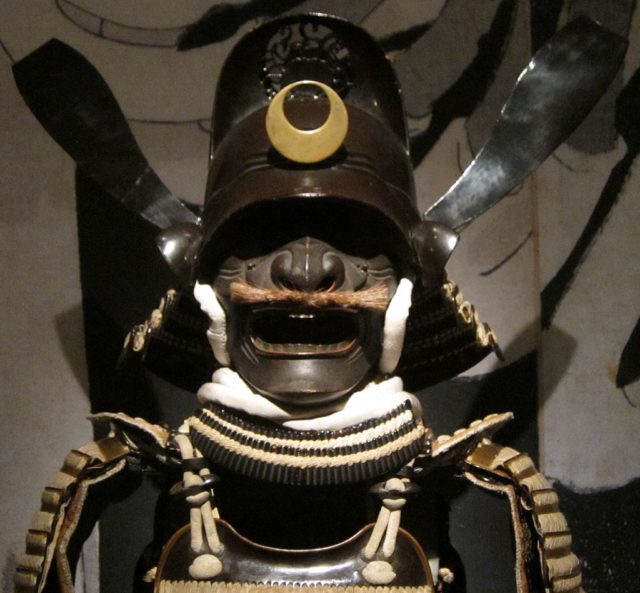
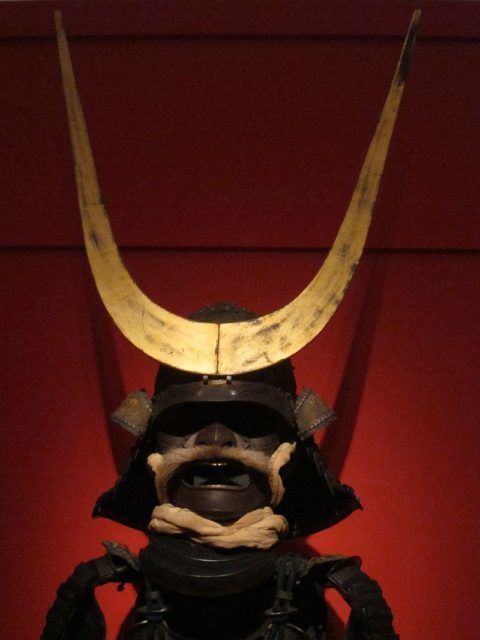
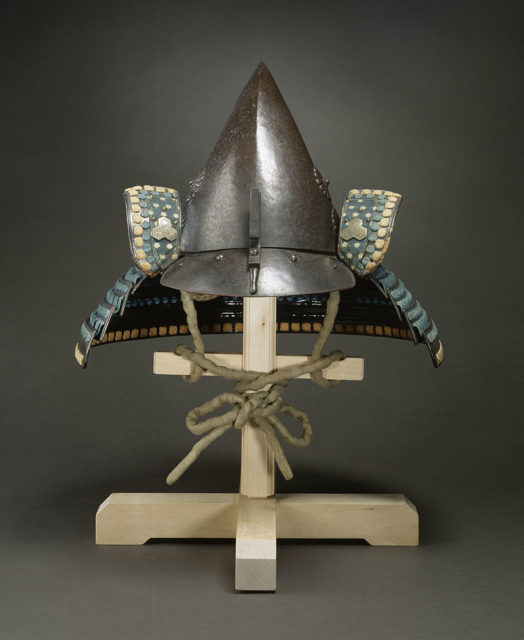
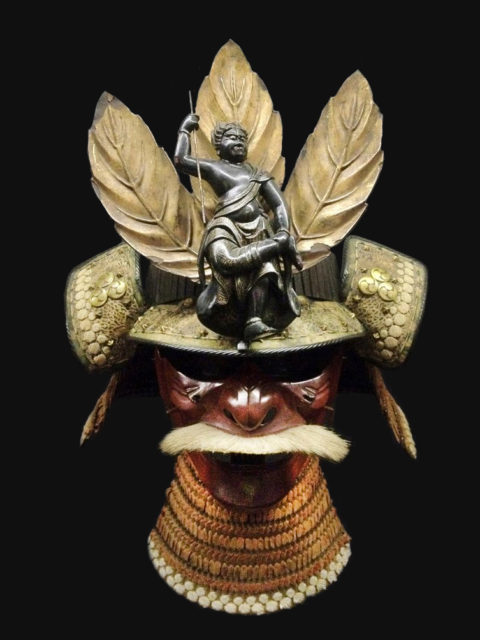
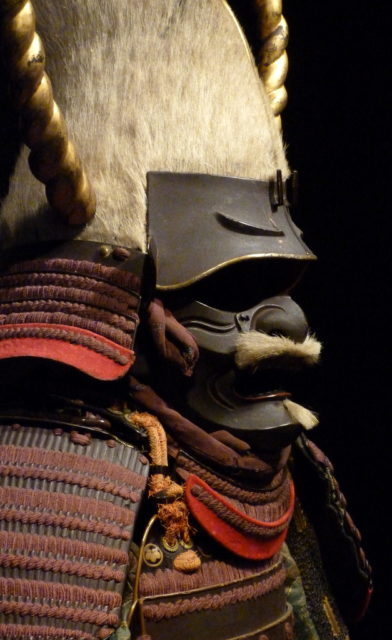
In almost all the kabuto discovered so far, there can be found a small opening located at the top of the helmet known as the tehen or hachimanza; hachimanza can literally be translated as a seat of Hachiman the War God. The purpose of this opening, which sometimes is just a hole at the top of the helmet, was thought to be for the passing of the warrior’s hair-knot. Historians suggest that the practice of keeping a long top knot by the warriors was largely abandoned in the post Muromachi period, however the opening on the top of the kabuto was retained for simpler purposes such as ventilation or to make prominent the artifact of exhibiting the riveted plates on the helmet.
The Kabuto undoubtedly played a very prominent and long-lasting role in depicting the ancient war code of the Japanese warriors, however, the symbolism of samurai helmet far surpassed its military application and seeped into Japanese wisdom and everyday sayings. One Japanese saying ‘Katte Kabuto no o o shimeyo, translated as ‘tighten your kabuto after winning’ and points towards the wisdom that ‘one must not adhere to rest very soon after one’s victory as this could be a loss in and of itself’. Another such phrase that uses Kabuto symbolism is ‘kabuto o nugu’ which literally means ‘take off the kabuto’ which is used to depict surrender or sometimes defeat.
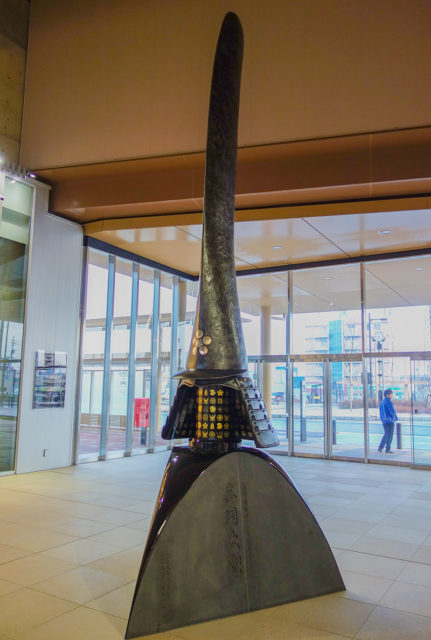
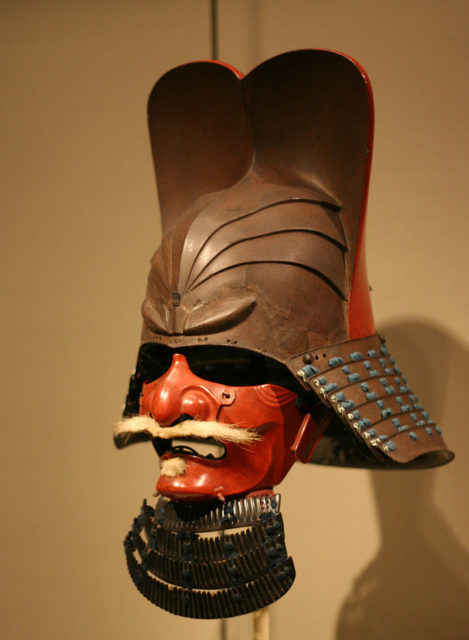
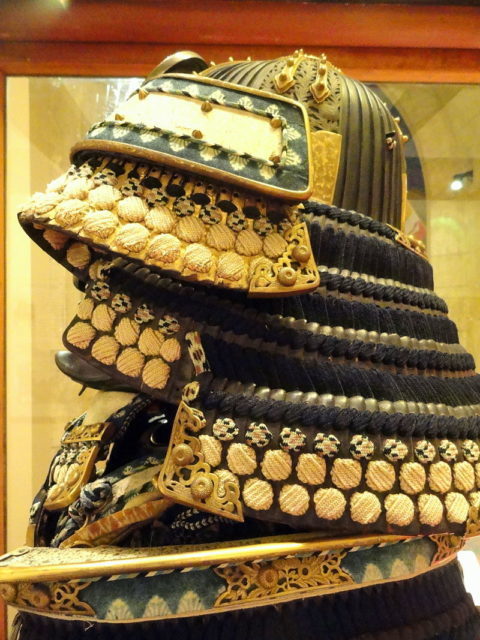

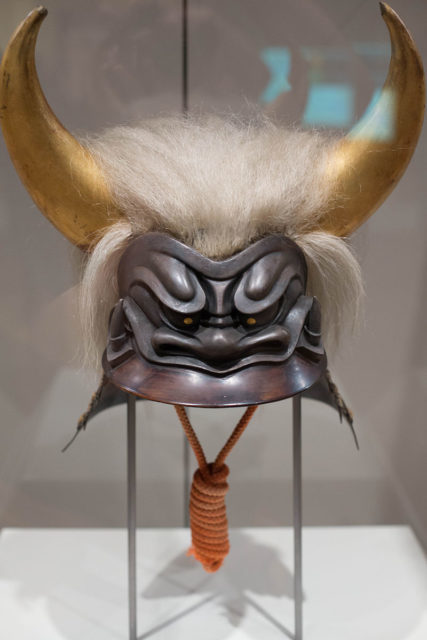
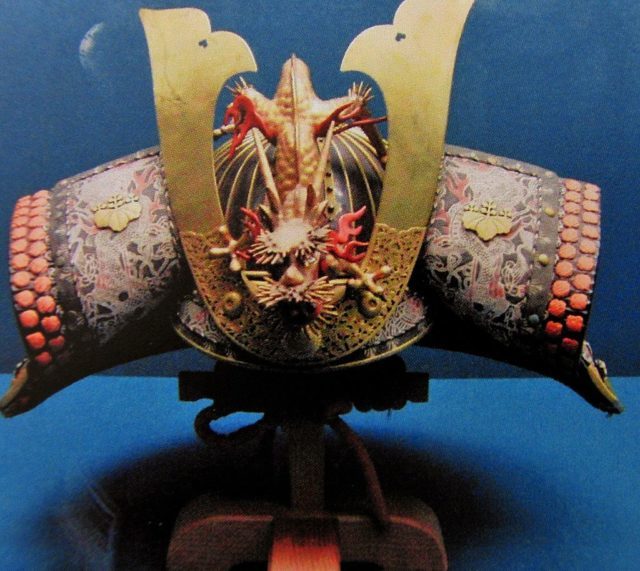
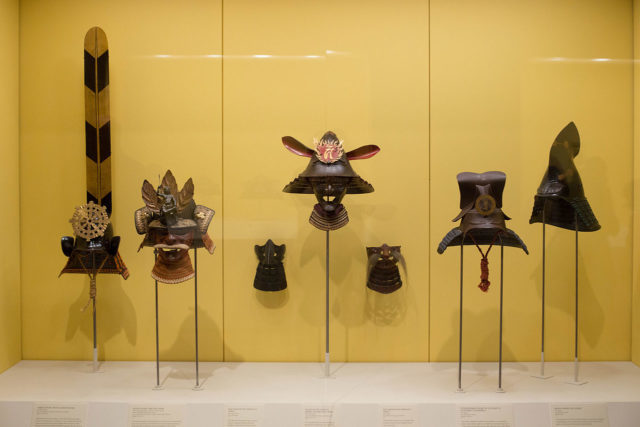
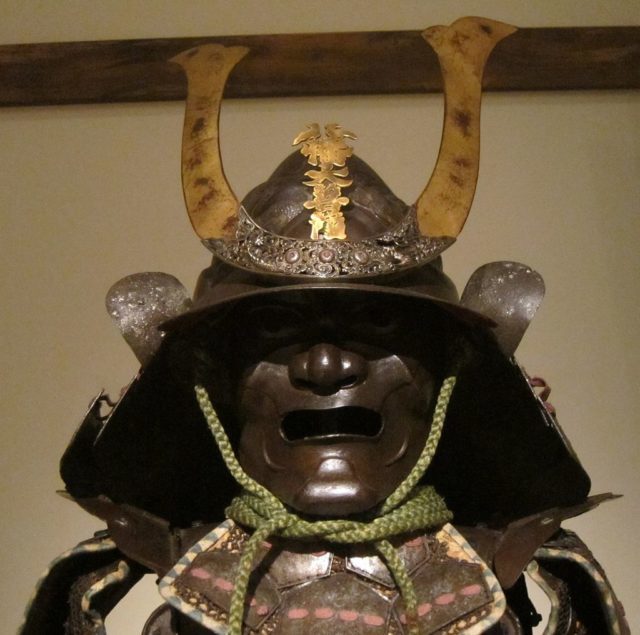
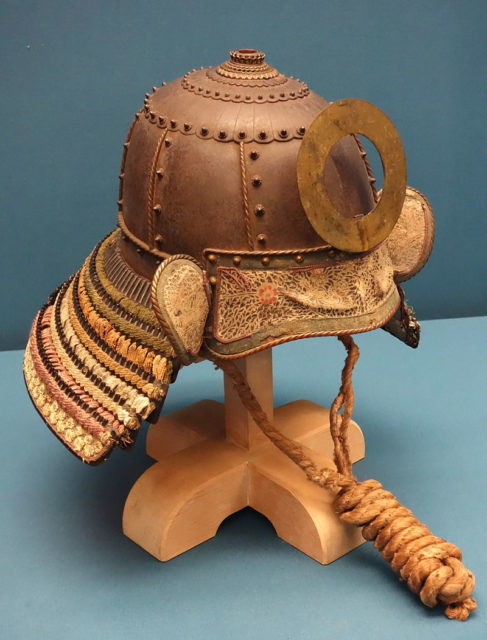
Though kabuto came in different shapes and sizes according to the need and liking of the warrior and of course according to the time and age, however, a typical kabuto was built with a central dome which is constructed from riveted metal plates ranging from three to three hundred in number. These plates were put together in a radiating manner, seemingly stemming from the tehen or the top opening on the kabuto. These riveted metal plates could be changed, again according to the needs and likes of the individuals.
In one type, these rivets securing the plates were somewhat raised, these types of kabuto arrangements were known as hoshi-bachi. If the rivets were made flat by hammering the type was known as suji-bachi. In another form flush rivets were used and it was called hari-bachi.
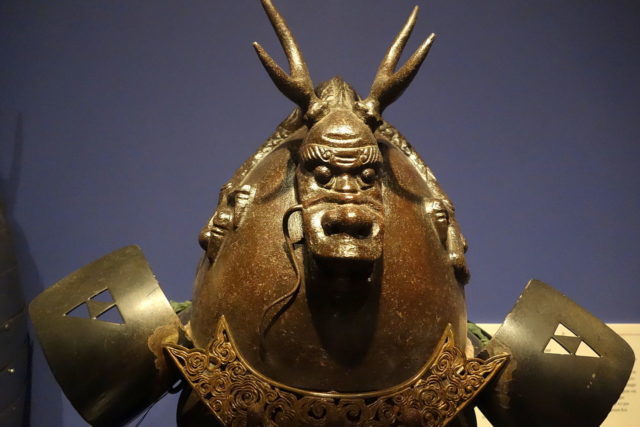
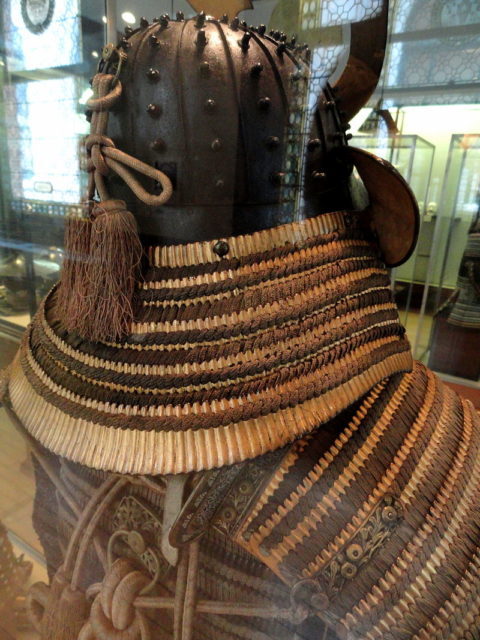
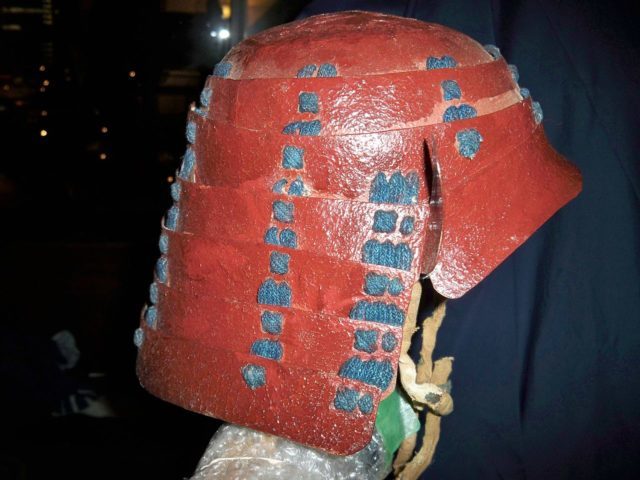
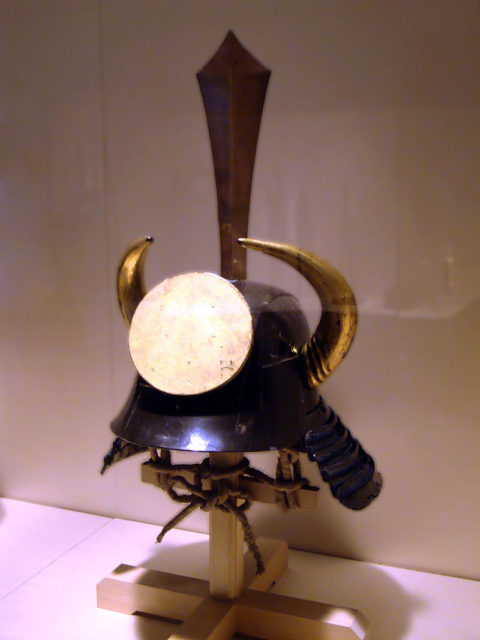
Another prominent feature of the kabuto was a suspended neck guard used alongside the helmet, the guard was called shikoro and was comprised of up to seven lacquered, semi-circular metal parts. These were then attached and tighten with the help of leather or silk lacings.
Read another story from us: The only surviving example of a complete Viking helmet in existence
In some comparatively large kabuto, the shikoro were made out of over 100 much smaller metal scales put together in rows. Shinobi-no-o was another part of the traditional kabuto, which was a chin cord to support the face against such large helmets.
